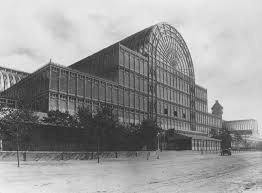Planning and Land Use
- Sean McGadden
- Nov 17, 2021
- 2 min read
Updated: Nov 18, 2021
Planning and land use history can date as far back as the ancient Greeks and the acropolis. They were among the first to create distinct urban environments for religion, civic engagement, and philosophical debate. Eventually even planning them with rigorous order and harmony in the eclipse of architectural imagination through the Parthenon and its adjacent structures in 447 BC. Planning and land use can be boiled down to the determination of the function and management of spaces. First one must decide whether these spaces are public or private and subsequently how these spaces are used and managed; either publicly or privately. All known exterior and interior environments can be scaled from this very basic spatial understanding of use. The Greeks considered certain interior spaces to be sacred in religion and other exterior spaces to be sacred to the people for the sake of gathering and communication.

I’d like to indulge myself within this reflection to step ahead in time to a modern example of the change in the function of spaces. The Great Exhibition of 1851 in Hyde Park, London, was the first step in combining technological advancements with complex spatial understandings of a newly industrialized world. This exhibition is famous for the unveiling of the Crystal Palace designed by Joseph Paxton which showed the powers of steel reinforced glass structures that began to allow light to wash interior spaces. These concepts had become widely fashionable in other parts of Europe and the rest of the world. More specifically, Le Bon Marché in Paris, founded in 1838 (completely reimagined in 1952 and finished immaculately in 1969) was the first large scale department store of the world. The advancements of steel and glass allowed for large expanses of outdoor spaces to be covered. More important than being covered from rain, was the ability for these spaces to be delegated to specific uses and regulations. This massive construction project began to plan and wrap entire city blocks for commercial use and eventually even conglomerations of multiple city blocks for the sake of consumerism. This project has less to do with laws and policies that changed the ways people understand land use. However, it set a strong precedent for capitalist tendencies we now acknowledge daily in a metropolis and our basic understanding of the city block. The advancements made in technology directly impacted the ways people bought new products and experienced consumerism in general. These projects have clear implications for the way land is used today and the ways companies and consumers initially engaged with shops in connection to the urban fabric. Many of the projects completed at this time led directly to a new understanding of the city. Eventually culminating into many new conceptions of urbanity such as the Burnham plan of Chicago in 1909 which also followed a world exhibition of its own in Chicago in 1983.
Acropolis Plan
Crystal Palace
Plan of Bon Marche



תגובות